Let's start with the docs to answer your Question:
By default a top-level window appears on the screen in its natural
size, which is the one determined internally by its widgets and
geometry managers. If the natural size of a top-level window changes,
then the window's size changes to match. A top-level window can be
given a size other than its natural size in two ways. First, the user
can resize the window manually using the facilities of the window
manager, such as resize handles. Second, the application can request a
particular size for a top-level window using the wm geometry command.
These two cases are handled identically by Tk; in either case, the
requested size overrides the natural size. You can return the window
to its natural by invoking wm geometry with an empty geometry string.
The problem is that you still want to use your wm_geometry, right?
So you cant just put the empty string in the wm_geometry, since this would undo your geometry that you defined before. This would only work if you knew a specific point in your code, e.g. a big widget, that will beyond your defined bounderies.
As I dont know your code I see just this two options:
- Kepp track of the dimension of widgets you put on your window.
- Define a minsize of your root window.
-> You would need to use grid in this case, cause you need the bbox of the basic widget methods that works with grid, pack return just (0,0,0,0).
So here is the code as exampel:
import tkinter as tk
root=tk.Tk()
root.geometry('200x200')
def adder():
tk.Label(root,text='spacer').grid(column=0,row=_r.get()) #add spacer
_r.set(_r.get()+1) #next row
root.update_idletasks() #update_idletasks to get correct value
if _b.get(): #if this part of the function never happend
if root.bbox()[3] >= 200: #check if the pixels of your bbox right down corner is beyond the height of 200
root.geometry('') #go back to natural behavior
_b.set(False) #set flag that we dont need this part of code anymore
else:
pass #skip
add_b = tk.Button(root,text='add', command=adder)
add_b.grid(column=0,row=0)
_b = tk.BooleanVar(value=True)
_r = tk.IntVar(value=1)
root.mainloop()
If you do know, when your frame will beyond your predefined geometry and you just want to span an empty frame then look at this and call root.geometry('') at this point.
The second option is way easier to handle and maybe the preferenced answer.
In this case you just use wm_minsize instead of your geometry method:
The window manager will restrict the window's dimensions to be greater
than or equal to width and height
import tkinter as tk
root=tk.Tk()
root.wm_minsize(width=200,height=200)
def adder():
tk.Label(root,text='spacer').pack() #add spacer
add_b = tk.Button(root,text='add', command=adder)
add_b.pack()
root.mainloop()
Last but not least you can think about a scrollable frame, which should be the best choice since your screen has limits too.

